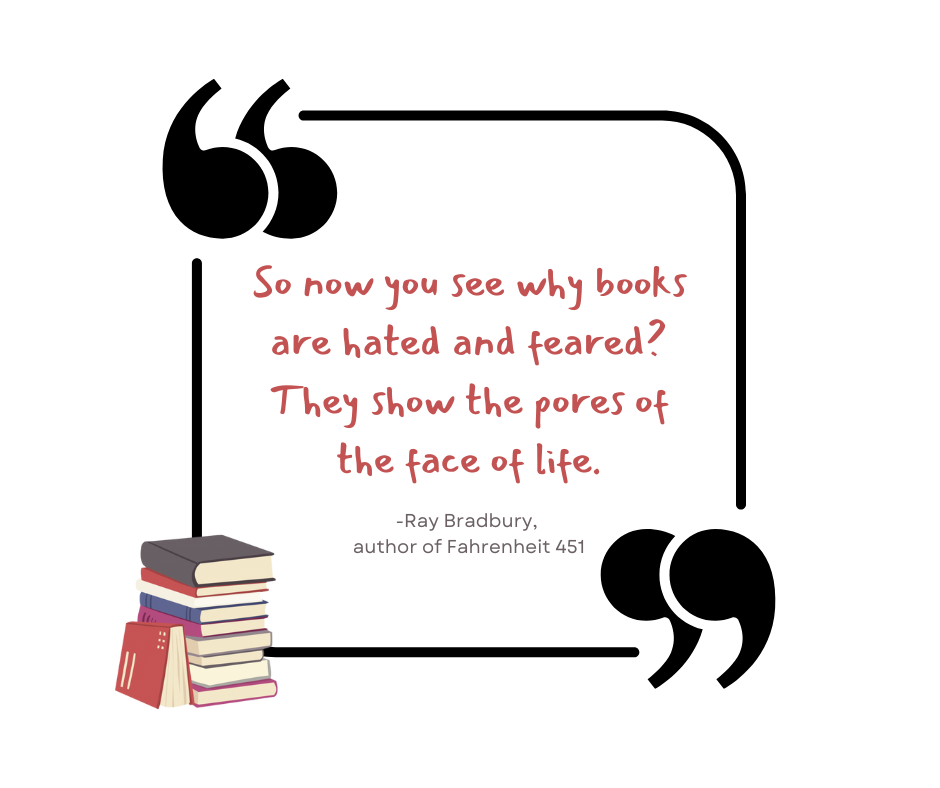5. Epilogue
- Sydney Byerly
- Apr 19, 2024
- 1 min read
Updated: Apr 22, 2024

"So now you see why books are hated and feared? They show the pores of the face of life.”
American author Ray Bradbury wrote that phrase, publishing it in his English classroom classic—“Fahrenheit 451.” The 1953 dystopian novel depicts a future American society where books are outlawed and “firemen” like main character, Guy Montag, are told to burn any that are found.
More than 70 years ago, Bradbury’s novel packed with social commentary on reading, predicted that books would continue to be challenged even far into the future just as they have throughout history.
A history where religious figures like Dominican friar, Girolama Savonarola, encouraged the entire Italian city of Florence to burn “luxuries” like books, artwork, musical instruments, jewlery and manuscripts because he, and he alone, had predicted the end of the world was near.
And people handed things over willing, piling things on top of the burnpile for the Bonfire of the Vanities. Well-known artists Sandro Botticelli and Lorenzo di Credi destroyed some of their own works in the bonfires, maybe in part because those who tried to resist where found by Savonarola’s vehement supporters the piagnoni (or weepers).
Shortly after the bonfires, however, Savonarola was excommunicated by the Pope, tried and executed for sedition and heresy. His execution was held in the Piazza della Signoria, where his infamous bonfires took place.
“You don’t have to burn books to destroy a culture. Just get people to stop reading them,” Ray Bradbury said.
Book censorship today, might not burn as bright as the book banning of the past, but history (and the “Fahrenheit 451” future) says it’s just as dangerous.






Comments